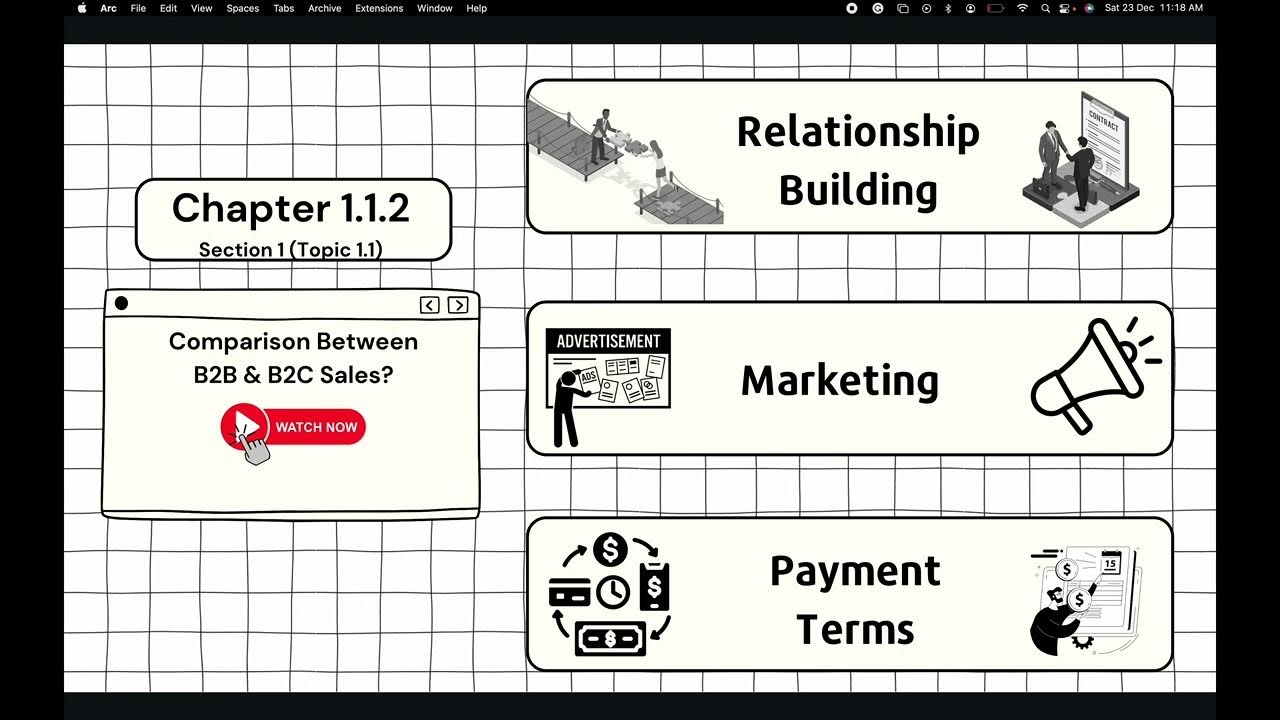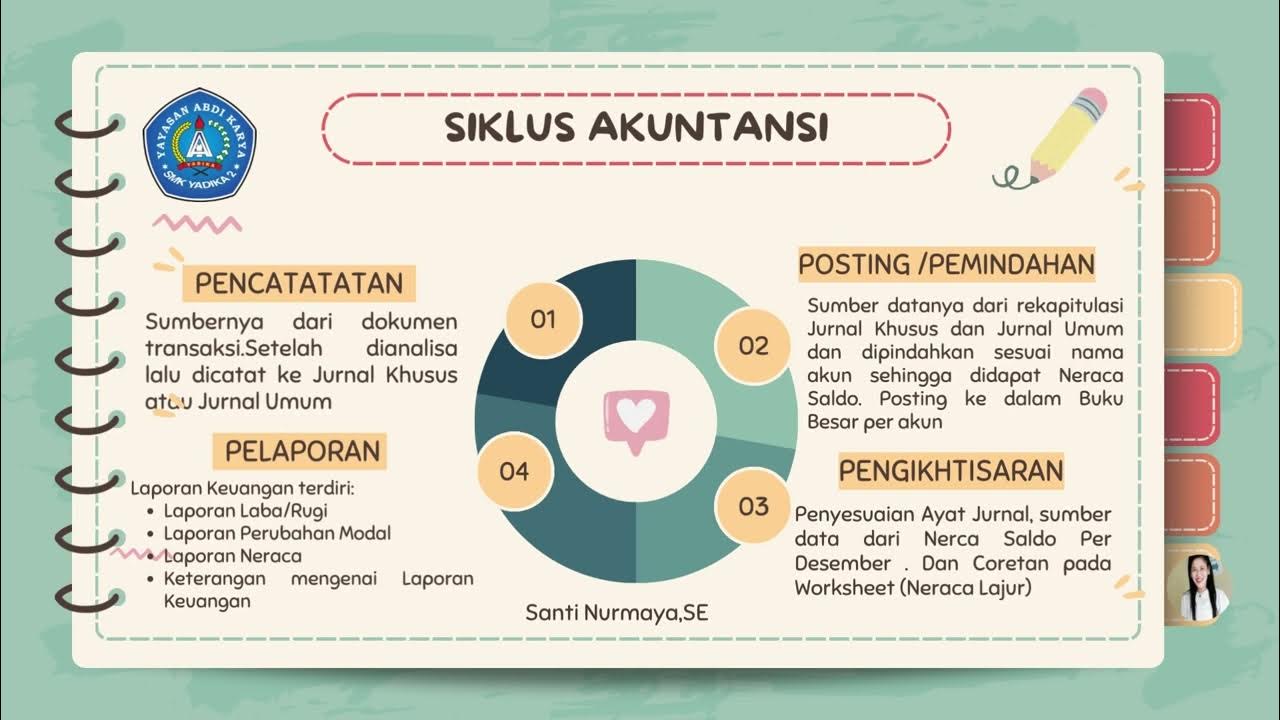3.4 Source Documents for Credit Transactions
Summary
TLDRThis script explains the distinction between sales and purchase invoices in credit transactions. A sales invoice is issued by a business selling goods on credit, while a purchase invoice is received when buying on credit. It clarifies credit terms like '5-30 n/60,' meaning a 5% discount if paid within 30 days, with an overdue status after 60 days. Key invoice elements include a unique number, buyer and seller names, credit terms, issue date, and the amount owed.
Takeaways
- 📄 There are two types of invoices: sales invoices and purchase invoices, which differ based on whether the business issues or receives the document.
- 🛒 A sales invoice is issued by a business when selling goods on credit to a customer, who receives the original document.
- 🛍️ A purchase invoice is issued to a business when it buys goods on credit, with the business retaining the original document.
- 💻 Invoices may include terms that specify payment conditions, such as discounts for early payment and due dates.
- 💰 The '5-30 n/60' term on an invoice indicates a 5% discount if paid within 30 days, with the full payment due within 60 days.
- 📅 If payment is not made within the specified 60 days, the account is considered overdue.
- 🔍 Key information on an invoice includes the invoice number, buyer's name, seller's name, credit terms, invoice date, and the amount owed.
- 🔑 The invoice number is unique to each document and is crucial for tracking and record-keeping.
- 🏢 The seller's name is the business issuing the document, while the buyer's name is the recipient of the goods or services.
- 🗓️ The invoice date is the date of the transaction, which is important for calculating payment terms and due dates.
- 💵 The amount owed is the total sum that the buyer must pay, including any applicable discounts or additional charges.
Q & A
What is the difference between a sales invoice and a purchase invoice?
-A sales invoice is issued by a business when it sells goods to a customer on credit, while a purchase invoice is issued by a supplier to a business when the business buys goods on credit.
Who retains the original of a sales invoice and who gets a copy?
-The customer receives the original of the sales invoice, and the business keeps a copy.
In the case of a purchase invoice, who holds the original document?
-The business that is purchasing the goods holds the original purchase invoice.
What does the term '5-30' on an invoice represent?
-The '5-30' term indicates that the customer is eligible for a 5% discount if they pay within 30 days from the invoice date.
What does 'n/60' mean in the context of invoice terms?
-'n/60' signifies the standard payment terms where the customer has 60 days to pay the invoice before it becomes overdue.
How does the due date of an invoice relate to the terms '5-30 n/60'?
-The due date is the 60th day from the invoice date, and if payment is made within the first 30 days, a 5% discount applies.
What information should be present on a typical invoice?
-A typical invoice should include an invoice number, buyer's name, seller's name, credit terms, invoice date, and the amount owed.
Why is the invoice number important?
-The invoice number is important because it provides a unique identifier for each invoice, which is crucial for record-keeping and tracking payments.
What is the significance of the seller's name on an invoice?
-The seller's name identifies the party issuing the document, which is the business that has sold the goods or services.
What does the buyer's name on an invoice indicate?
-The buyer's name indicates the recipient of the goods or services, and it is the party responsible for making the payment as per the invoice terms.
How can a business determine if an account is overdue based on the terms provided?
-An account is considered overdue if the payment is not received by the due date, which in the example given is 60 days after the invoice date.
Outlines

This section is available to paid users only. Please upgrade to access this part.
Upgrade NowMindmap

This section is available to paid users only. Please upgrade to access this part.
Upgrade NowKeywords

This section is available to paid users only. Please upgrade to access this part.
Upgrade NowHighlights

This section is available to paid users only. Please upgrade to access this part.
Upgrade NowTranscripts

This section is available to paid users only. Please upgrade to access this part.
Upgrade Now5.0 / 5 (0 votes)





